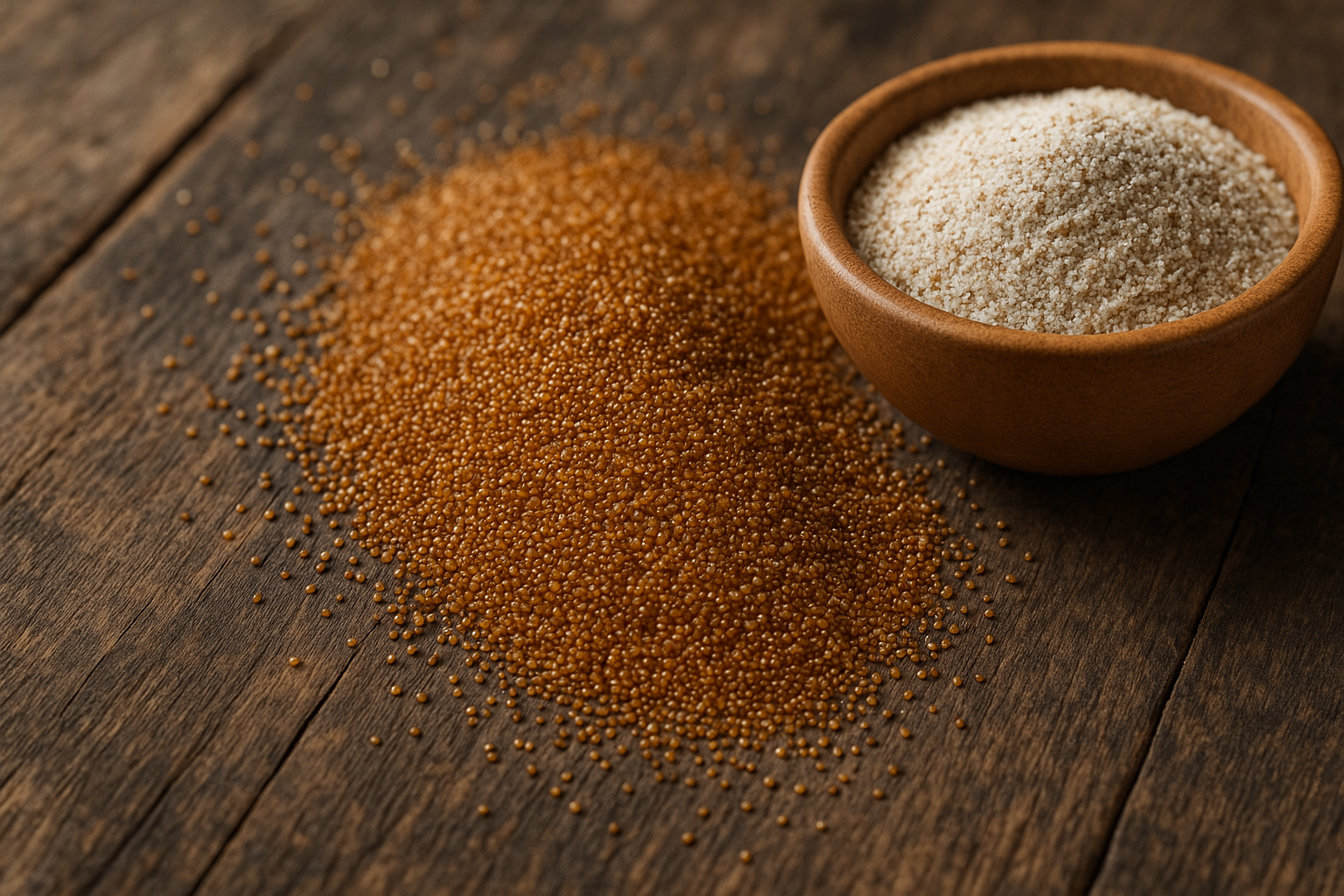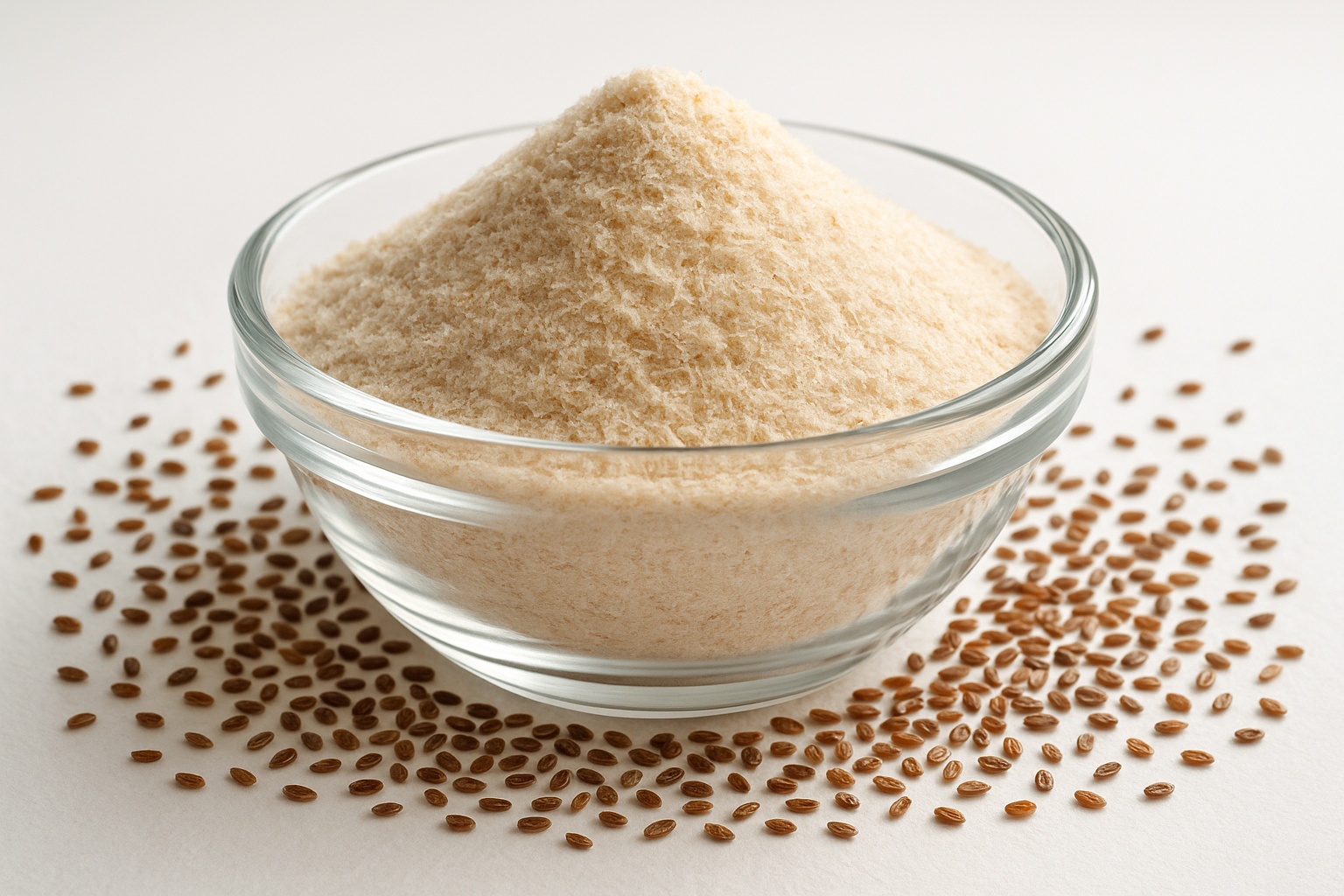
Eindelijk weer grip op je (darm)gezondheid?

Discover the Nativfood Academy
In addition to our blogs and delicious products, Nativfood also offers online courses where you can learn all about healthy eating, authentic recipes, and a conscious lifestyle. With practical tips, clear explanations, and inspiring examples, we help you move forward step by step. Whether you want to cook with more confidence, be more mindful of your food, or simply discover new flavors – our e-courses give you all the tools you need.
What's inside

What's inside
by Valerie Pas
on Sep 19 2025
What is Baobab?
Baobab ( Adansonia digitata ) is the fruit of the iconic "monkey bread tree" from Africa. The flesh dries naturally within the fruit, allowing it to be ground directly into a powder. This makes baobab a pure, unprocessed superfood.
Nutritional value & function
Up to 50% fiber , much of which is soluble.
Very rich in vitamin C (more than oranges).
Contains calcium, magnesium, potassium and antioxidants.
Naturally slightly sour, fresh taste.
Studies show that baobab:
Lowers blood sugar : it slows down the absorption of sugars from food and prevents spikes.
Supports intestinal health : the soluble fibres have a strong prebiotic effect.
Provides antioxidant protection : helps neutralise free radicals and combat low-grade inflammation.
Increases satiety : the high fiber content makes people feel full faster.
Why we use baobab
In our mixes, baobab contributes to:
Fresh taste and natural slightly sour note.
Extra fiber content , ideal for intestinal flora.
Boost of micronutrients such as vitamin C and calcium.
Fun fact The baobab is also called the "tree of life." In Africa, almost all parts of the tree are used: the leaves as a vegetable, the seeds for oil, and the fruit as food.
Sources:
Coe SA et al. (2013). The polyphenol-rich baobab fruit reduces starch digestion and glycemic response. Nutrition Research , 33(11):888–896.
Chadare FJ et al. (2009). Baobab food products: a review. Critical Reviews in Food Science and Nutrition , 49(3):254–274.

What's inside
by Valerie Pas
on Sep 19 2025
What is teff?
Teff ( Eragrostis tef ) is the smallest grain in the world and originates from Ethiopia, where it has formed the basis of traditional injera (flatbread) for thousands of years. It is gluten-free, nutritious, and exceptionally rich in minerals.
Nutritional value & function
High in fiber (7–8 g per 100 g).
Good source of vegetable protein (12–13%).
Rich in iron , calcium, magnesium and zinc.
Contains resistant starches , which digest slowly and cause blood sugar levels to rise less quickly.
Naturally gluten-free and slightly nutty in flavour.
Research shows that teff:
Helps stabilize blood sugar levels due to the high fiber and resistant starch content.
Contributes to iron status : the high iron content makes teff interesting for people with an increased need (e.g. women, athletes).
Intestinal flora supported : the fibres have a prebiotic effect and stimulate healthy bacteria.
Gluten free safe is : clinically tested in celiac patients.
Why we use teff
Teff flour gives our mixes:
A firm, whole-grain bite reminiscent of rye or spelt.
Extra nutritional value with minerals and proteins.
Stable energy , ideal for a high-fiber lifestyle.
Fun fact Ethiopian athletes like Haile Gebrselassie often attribute their endurance to teff. The grain is so small that up to 150 seeds can fit into a single kernel of wheat.
Sources:
Saturni L et al. (2010). Nutritional and functional properties of teff. Clinical Nutrition , 29(3):311–318.
Baye K. (2014). Teff: nutrient composition and health benefits. Ethiopian Journal of Health Sciences , 24(2):91–96. Image generated with AI

What's inside
by Valerie Pas
on Sep 19 2025
What is Sorghum?
Sorghum ( Sorghum bicolor ) is an ancient grain that has been cultivated for over 5,000 years, primarily in Africa and India. It is naturally gluten-free and known for its drought resistance. Today, sorghum is recognized worldwide as a sustainable alternative to wheat and rice.
Nutritional value & function
Rich in fibre (up to 6–8 g per 100 g flour).
Good source of vegetable protein (10–12%).
Contains antioxidants such as phenolic acids and tannins, which have anti-inflammatory properties.
Supplier of important minerals: iron, magnesium, potassium and zinc .
Naturally gluten-free and mild in flavour, ideal in bread and baked goods.
Studies show that sorghum:
Helps stabilize blood sugar : the combination of fiber, proteins and polyphenols slows down the absorption of glucose.
Supports gut health : Fermentable fibers stimulate beneficial bacteria in the colon.
Provides antioxidant protection : the polyphenols neutralise free radicals and reduce the risk of low-grade inflammation.
Suitable for celiac disease and gluten intolerance : it is often recommended as a safe grain option.
Why we use sorghum
In our mixes sorghum flour provides:
A soft, bread-like texture similar to whole wheat bread.
Nutritional value + fiber without the blood sugar spike of wheat.
A neutral, slightly sweet taste that combines well with other ingredients.
Fun fact In some African countries, sorghum is traditionally used to make fermented porridge or beer. In the US and Australia, it's even popped like popcorn!
Sources:
Stefoska-Needham A et al. (2015). Sorghum: an underutilized cereal with potential in gluten-free foods. Food Reviews International , 31(4):401–437.
Kumar A et al. (2022). Nutritional and health-promoting aspects of sorghum. Frontiers in Nutrition , 9:947077.
de Morais Cardoso L et al. (2017). Health benefits of sorghum. Journal of Cereal Science , 77:252–262.

What's inside
by Valerie Pas
on Sep 19 2025
What is it?
Psyllium comes from the seed coat of the Plantago ovata (flea seed). It is a completely soluble fiber that has been used for centuries in Ayurvedic and Western herbal medicine. Unlike grains, psyllium contains few calories or digestible carbohydrates: it consists almost entirely of fiber.
Nutritional value & function
Up to 85% soluble fiber .
Attracts water and forms a gel in the intestines.
Works as a prebiotic: food for beneficial intestinal bacteria.
Slows the absorption of sugars, keeping blood sugar levels more stable.
Gives a feeling of fullness without extra calories.
Scientific evidence Research shows that psyllium:
Improves intestinal transit : it increases the volume of stool and promotes regular bowel movements.
Cholesterol lowers : 10–12 g of psyllium daily can significantly reduce LDL cholesterol.
Stabilizes blood sugar : Psyllium helps to moderate postprandial (after-meal) blood sugar spikes, especially in people with insulin resistance or type 2 diabetes.
Intestinal flora supports : fermentation of psyllium fibres leads to the production of short-chain fatty acids (such as butyrate), which have an anti-inflammatory effect and protect the intestinal wall.
Why we use it In our mixes psyllium provides:
Structure & airiness : it binds water and makes gluten-free dough more elastic.
Higher fiber content : ideal for making our products rich in fiber and intestinal friendly.
Long-lasting satiety : you feel full for longer after a meal.
Fun fact The name psyllium comes from the Greek word psylla , meaning "flea." This refers to the small seeds that resemble fleas. Many people therefore call it flea seed.
Sources:
European Food Safety Authority (EFSA). Scientific Opinion on the substantiation of health claims related to psyllium.
Anderson JW et al. (2009). Health benefits of dietary fiber. Nutrition Reviews , 67(4):188–205.
Pal S, Khossousi A et al. (2011). Psyllium reduces blood pressure and serum lipids. British Journal of Nutrition , 106(1):186–193.

